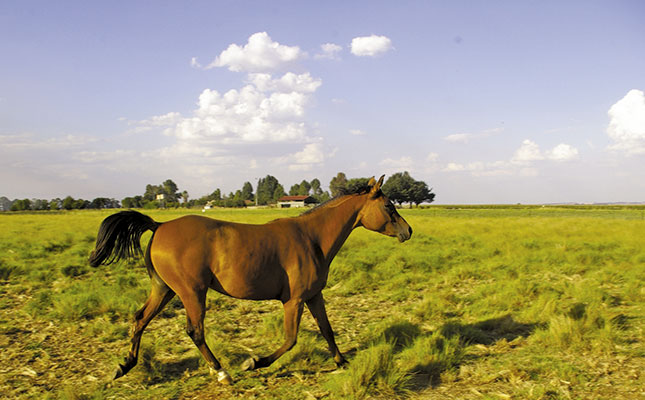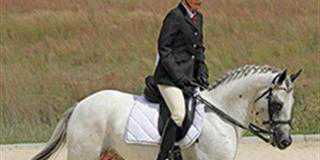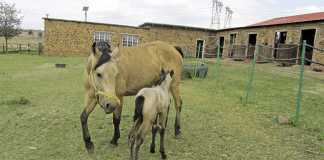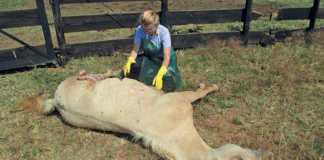
The modern horse lives a life far removed from that of its ancestors. This is not necessarily a good thing, as domestication imposes unnatural living conditions that can lead to disease. In the wild, horses roam an average of 30km a day in search for food. Most domesticated horses are lucky if their paddocks are more than a few metres in size. But the likelihood of disease and ‘bad behaviour’ can be greatly reduced through a healthy diet.
A horse’s teeth and digestive system are made to handle roughage. Its large intestine is essentially a fermentation vat, where the food is broken down into smaller and smaller components, helped by bacteria and other micro-organisms. The very best diet for a horse is well-fertilised grass containing natural herbs. Grains are not the ideal diet for horses. A good rule of thumb is that a horse 16 hands high (about 1 600mm) should receive 16kg roughage.
The ration of a horse not at work should comprise one-third concentrate and two-thirds roughage. A hack’s ration should comprise 50% concentrate and rough. A show or endurance horse should be fed two-thirds concentrate, with the rest roughage.
Suffering from acid build-up
Under normal conditions, a horse will graze for 16 hours a day. A fair amount of that will be at night. A horse’s digestive tract produces acid continuously, so the animal constantly needs small amounts of food for the acid to process. A horse that wind-sucks or bites its crib is simply easing its discomfort caused by acid build-up in the stomach. Wind-sucking produces saliva, which neutralises the acid.
If you stable your horse, ensure that the teff net has grass in it in the morning. If you fail to do so, you are damaging your horse’s digestive tract. If you want to fatten a horse, add two good quality teff nets of feed to its diet – not concentrate. Too much concentrate will contribute to arthritis and kidney problems. Foals must have their ribs showing slightly, as too much protein will hamper their bone development. They should not eat out of their mother’s manger until they are older than six months.
Cut the grass and clean up!
In your paddock, the grass should be a maximum of 2,5cm in length. The longer the grass, the more cellulose is needed to keep it upright, which lowers the nutritional value of the grass. Regular cutting of paddocks also increases root development and helps establish strong grass. Ensure that droppings are picked up daily – manure makes the surrounding grass sour and can also deplete its nutritional value.
Once a year, dress the paddocks with agricultural lime before rain. This will sweeten the grass. As mentioned before in this column, herbs make excellent additions to a paddock. Horses will naturally eat the herbs they require to be healthy.













